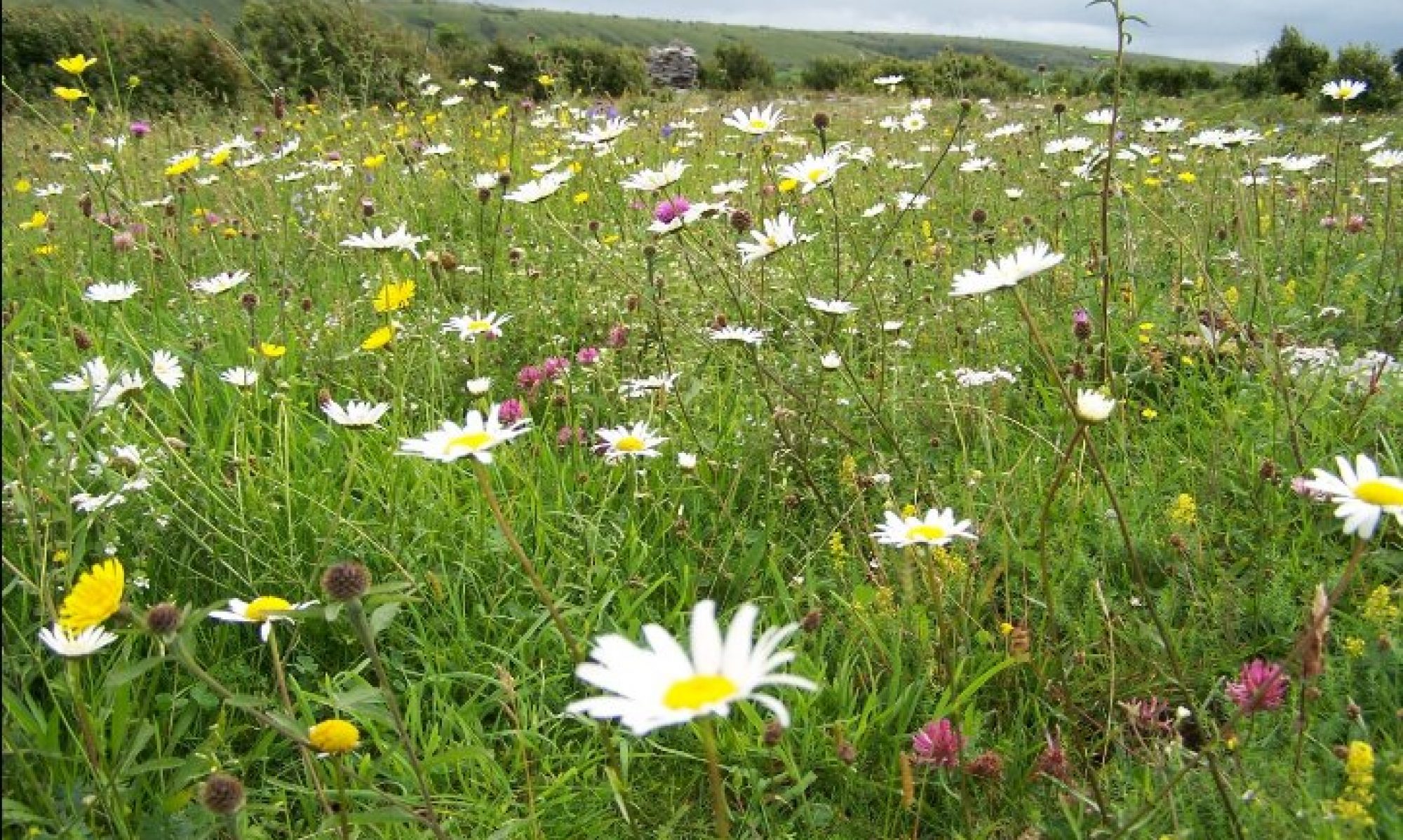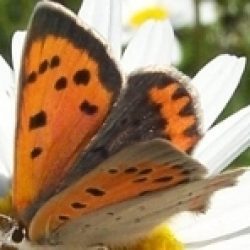The magic ingredient for a butterfly event outdoors is warmth and sunshine and the weekend of the 17th and 18th of May provided this magic. Bright, unbroken sunshine and the temperature peaking at 24 and 25 Celsius allowed butterflies and day-flying moths to fly at any time during the day. Butterflies do not usually fly throughout the day. They feed, rest, shelter, bask, mate and lay eggs as well as flying.
I was a little fearful that the prolonged fine weather might have brought an early closure to the flight period of the Pearl-bordered Fritillary but happily, this butterfly put in a great display, glowing deep orange in crystal Burren sunshine.
What is also key to the success of any outing is the people taking part. The enthusiastic group on both days sparked the atmosphere nicely, adding to the excitement of being in beautiful habitats in sublime weather. At Fahee North we sampled the butterflies in a site containing calcareous grassland, limestone heath, exposed limestone pavement, humid/wet grassland/marsh and scrub. The adjoining site holds open scrub on limestone pavement with dry calcareous grassland. This site, which holds a holy well, has long been notable for its Pearl-bordered Fritillary population. It must be emphasised that the habitats are protected by Burrenbeo Trust volunteers controlling, but not eliminating scrub.
Scrub is a vital part of the habitats and must be retained. The image below shows a larval nest of Small Eggar caterpillars on Blackthorn that is part of a patch of roadside scrub. This moth has been recorded in just 34 10 km squares since 2000, 15 of these are in or near the Burren. We enjoyed observing the to-ing and fro-ing of the heat-excited caterpillars. In the hottest part of the day, most had retreated to the interior of their web.

We were delighted to see so many Marsh Fritillaries on the grassland and heath. This is the earliest I have seen them in the Burren. We have males skirmishing, briefly and the more sedate females keeping a discreet difference. These had mated already so the males were of no interest to the females who were preparing to lay their first and largest egg load or were flying with the freedom that comes with significant weight loss, feeding and maturing a second egg batch. Common Blues were lesser in number but showy, bringing their sky-blue shimmer to the scene. Small Heath bobbed about the fescue tussocks, flashing their bright orange uppersides at us.
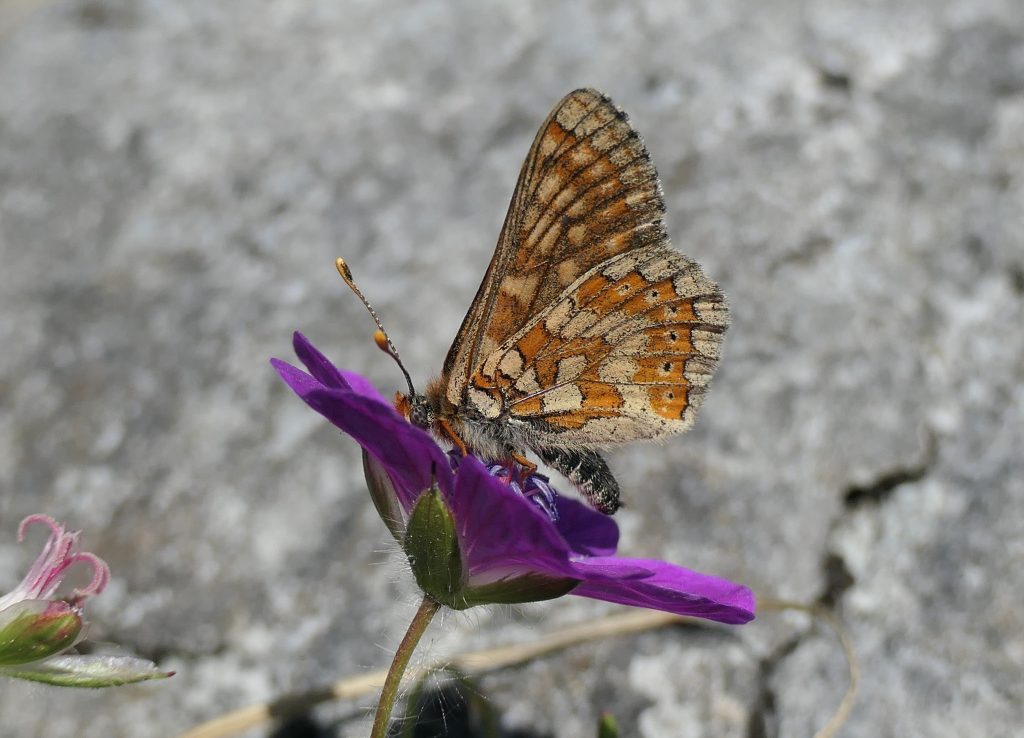
We moved onto the limestone pavement and soon Pearl-bordered Fritillaries appeared. Some were caught and placed in jars to be admired and released. Several moths were netted. I saw my first-ever Burren Narrow-bordered Five-spot Burnet along with Six-spot and Transparent Burnets (known from just four counties, mainly in Clare), all symbols of pristine, undamaged habitats. A spectacular day-flier, the Wood Tiger, was also netted and displayed, to the delight of all. It is a beautiful species and is probably uncommon everywhere it still occurs. It is listed as Near Threatened and has not been recorded in 17 counties in the Republic of Ireland since 2000. Speckled Yellow, which looks like a butterfly was also sighted. It rarely poses for photographs, alas! It has not been reported from 20 counties on the island of Ireland. When you see it in abundance in the Burren, don’t take this for granted. The Dew moth was also a welcome sight. This gem has been returned from just three counties: Clare, Galway and Mayo. It is in good hands in the Burren, as long as its habitat is not molested.


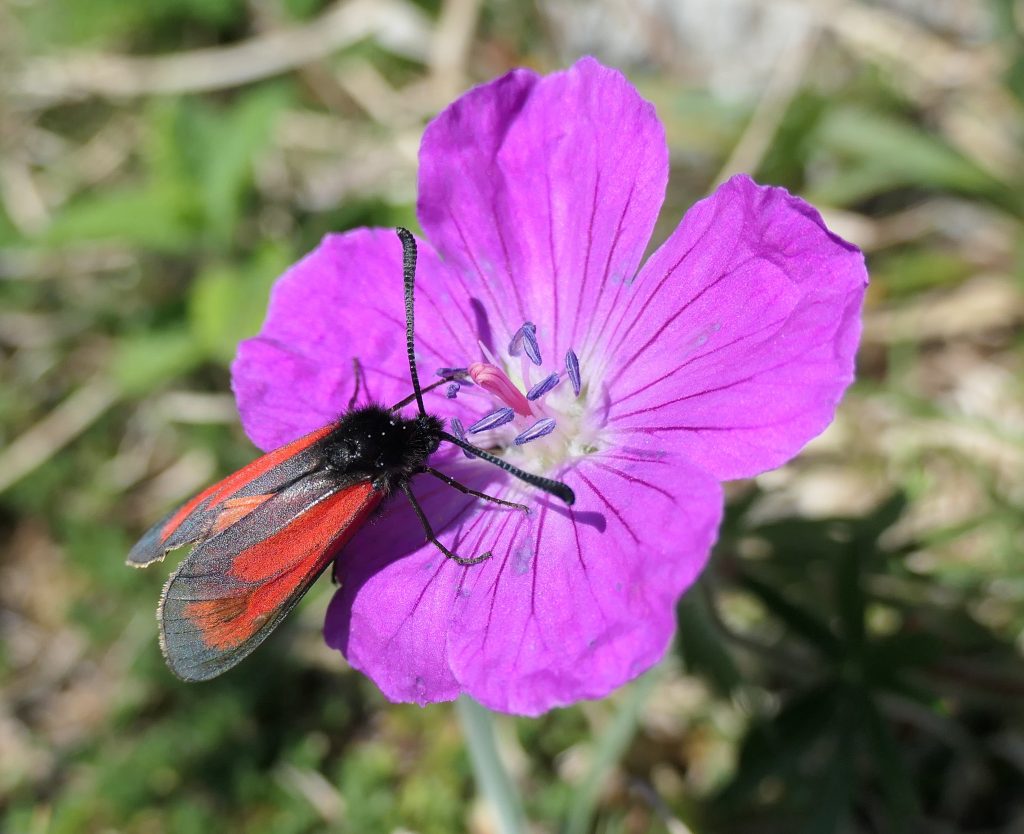
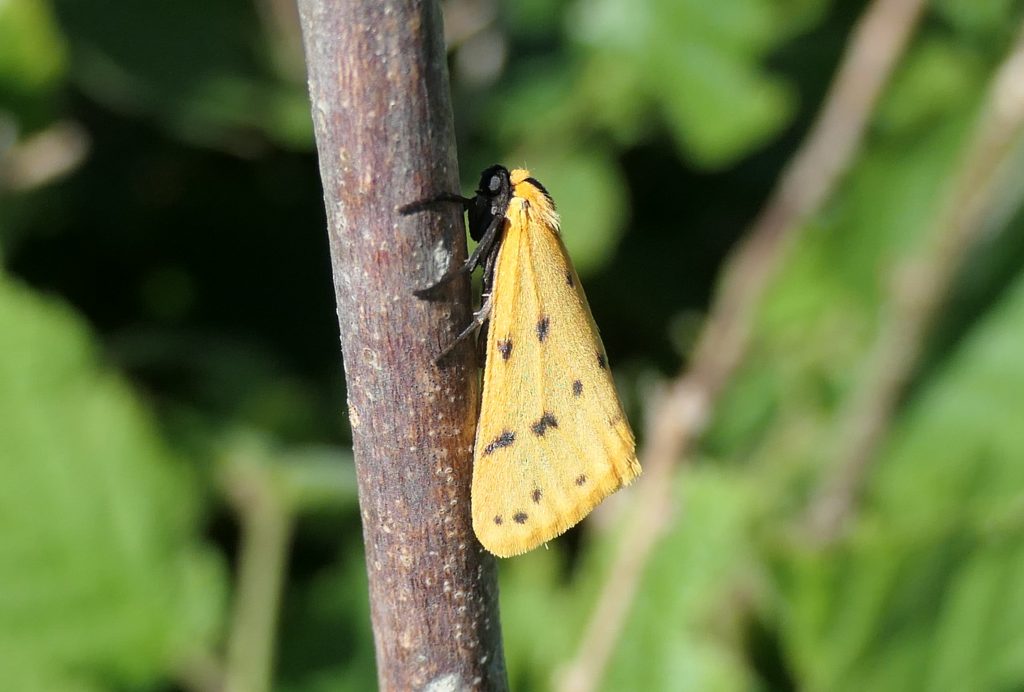

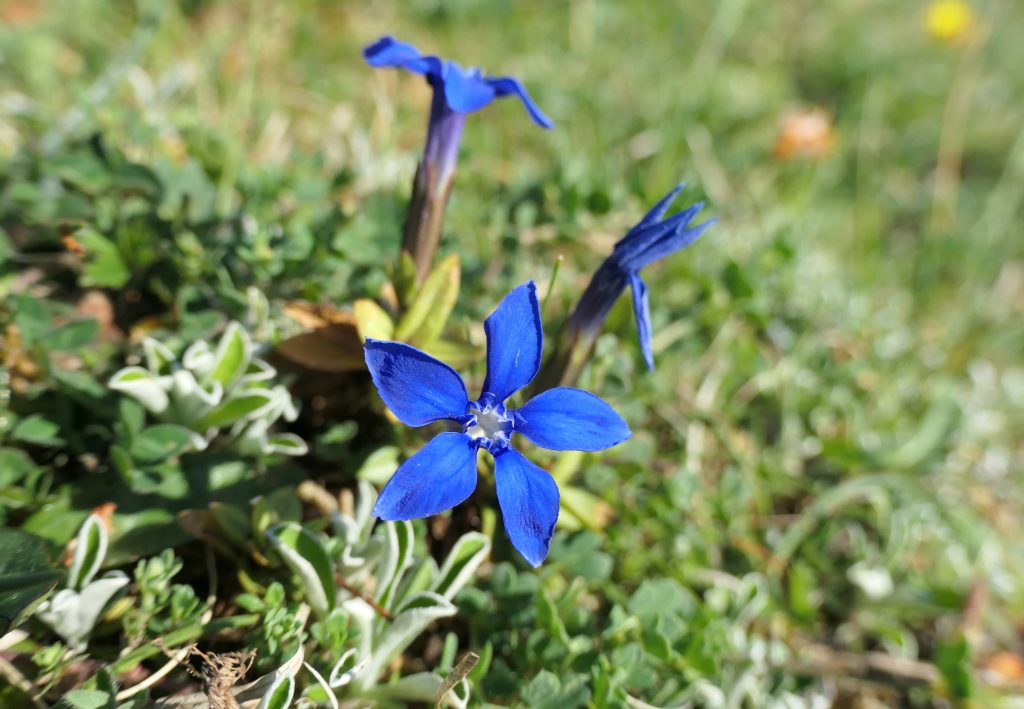
Sunday meant a later start but we made the most of the additional time with some exploring the nearby Cahercommaun ring fort. The surrounding calcareous grassland and Hazel scrub are rich in butterflies. The easy exploration allowed by the Clooncoose Valley Green Road is one benefit. This is surely Ireland’s Butterfly Road. The traffic can be congested and casualties occur with the area’s predators knowing that rich pickings are available. We watched a Hairy Dragonfly pounce on a male Marsh Fritillary, carrying the hapless victim in its vice-grip jaws. A collective dismay engulfed the group. The road teemed with dragonflies, mostly Black-tailed Skimmer, Hairy Dragonfly and Four-spotted Chaser.
One area adjoining the road, a clearing in the scrub, was being used as a lek site by Small Heath butterflies. Watching the males display to catch a lady’s eye was intriguing. This is the first time I have seen this behaviour in this pretty little butterfly. I netted both, showed one to the group and when released he returned to his lekking site to continue with his competitive display.
The road offers a route through a large area, from near the Gort road to Cahercommaun and some butterflies using this infrastructure do not breed along the route; Marsh Fritillary and Pearl-bordered Fritillary seem to use it to move through the area and seek mates.
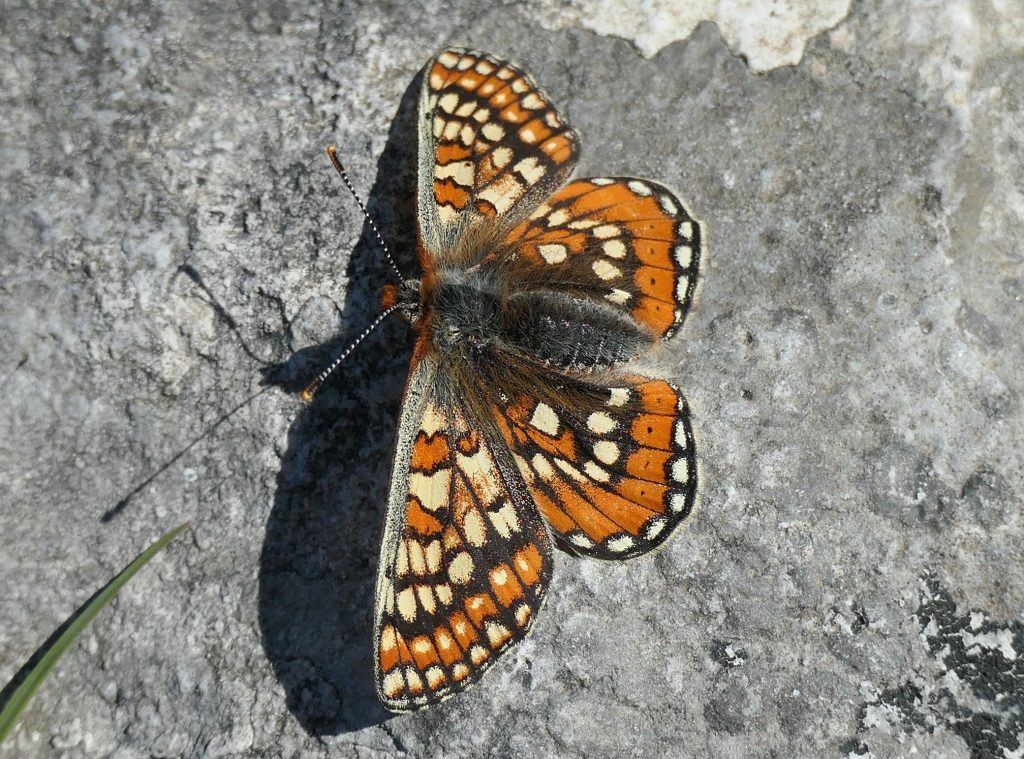
The Pearl-bordered Fritillary occurs only in the Burren, occupying just ten 10 km squares, mainly in the east Burren, in open scrub on limestone. It was only discovered in 1922, in Clooncoose. It remains in place hopefully never to be removed.

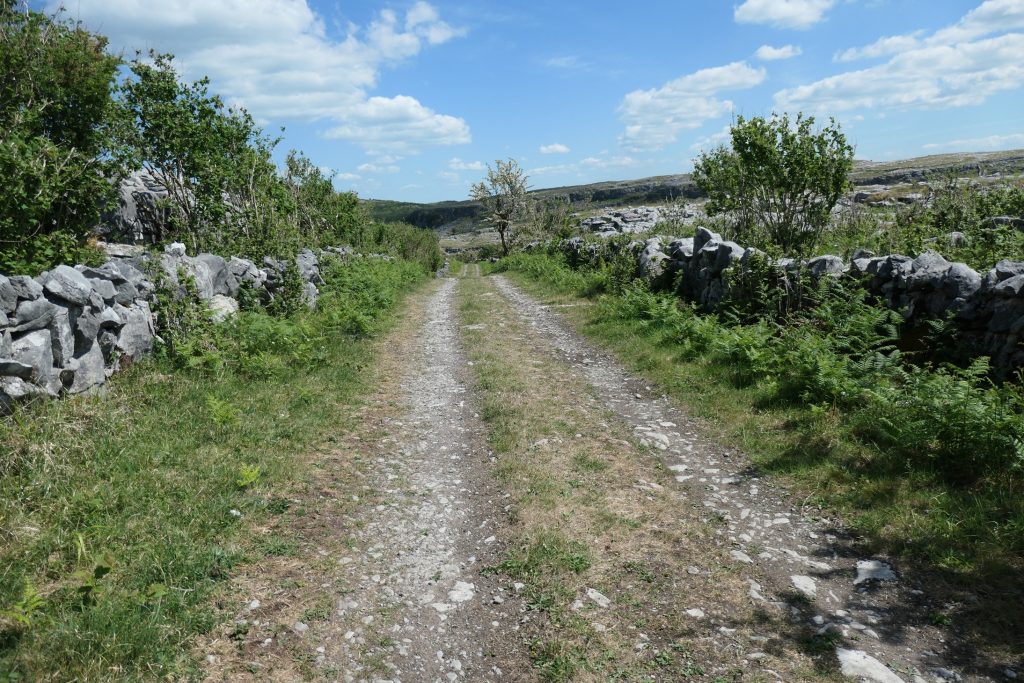
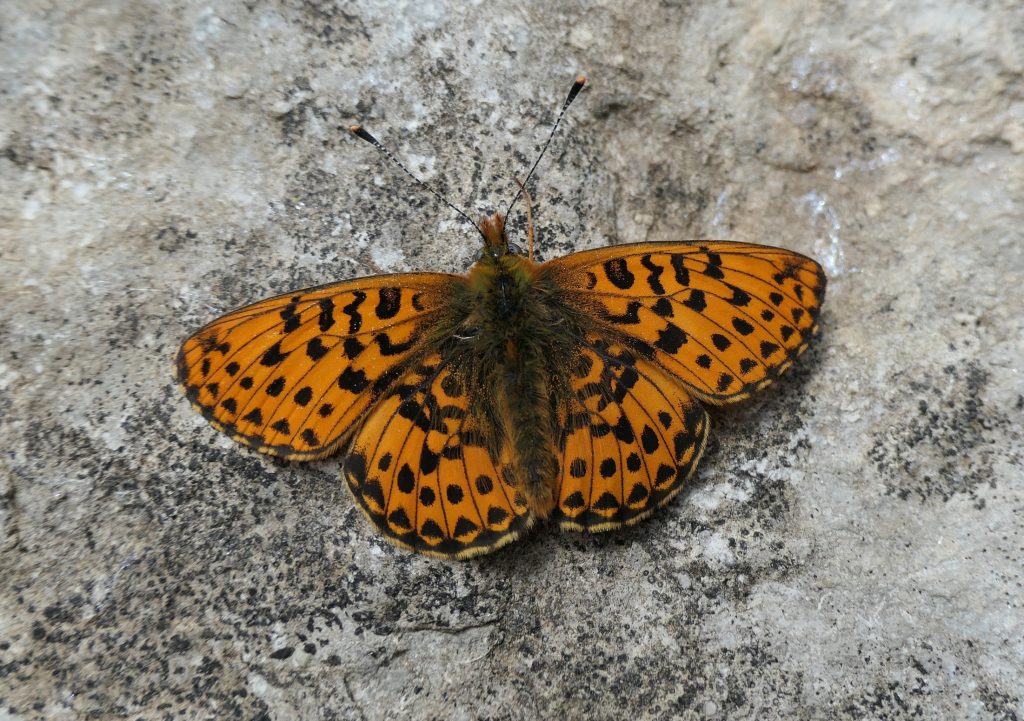
Thanks to everyone who helped, including those who spotted and netted butterflies, moths and dragonflies and especially to the lady who baked me a cake, another magic ingredient!
